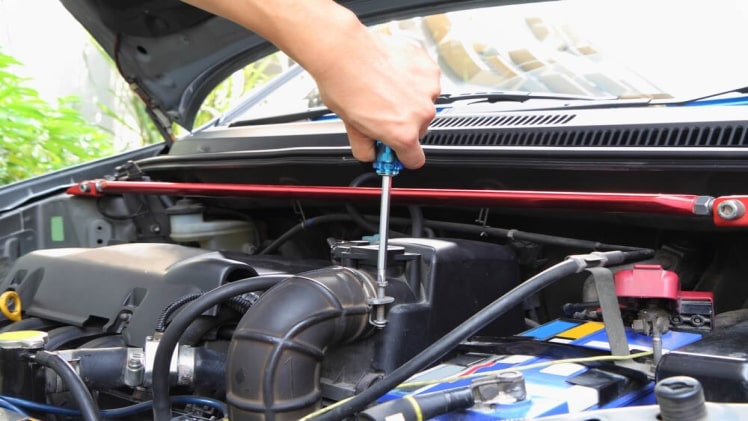Automotive technology has become so advanced in recent years that they almost seem like self-sustaining super machines that can do just about anything for you. Of course, this is a great thing. Imagine telling somebody 20 years ago that cars would be able to navigate for you via satellite, have voice activated features and even park themselves. They probably wouldn’t believe you! It’s wonderful that modern cars are jam packed with the kinds of luxury and safety features that one could barely imagine up until recently.
However, there is perhaps one slight downside.
The more technologically advanced our cars become, the less the average car owner can keep up in terms of mechanical know-how. Cars used to be simple machines with simple engines and simple parts like borla exhaust. This meant most people were able to grasp at least some basic maintenance concepts that could potentially get them out of a pickle if the car decided not to start. Now, however, it seems every aspect of a modern car is controlled by complex computer systems, and so the only indication we get of something being wrong is when the ‘check engine’ light appears on the dash.
This doesn’t have to be the case, though. Whether they be responsible driving techniques or basic maintenance skills, there are still things we can do as drivers to help keep our cars in good shape.
1. Check your engine oil
When the engine is warm, pull out the dipstick, wipe off the oil with a rag or tissue and reinsert it. Now pull it back out and check that the oil level is between the ‘high’ and ‘low’ markings.
If the level looks a bit low, then top it up with whatever oil grade is recommended in your car’s user manual.
Doing this weekly will ensure the engine doesn’t get so low on oil that it seizes up and costs you a fortune to repair.
2. Check the cooling system
Firstly, wait at least half an hour after turning your engine off to make sure that the engine is cold, otherwise you risk potential injury. Now check the level in the plastic overflow bottle. The coolant level should be in between the high and low markings.
Next, remove the radiator cap and check the coolant level in there too. If it is low, refill it with the coolant fluid that is recommended in your car’s user manual.
While the bonnet is open, it’s worth checking the hoses and pipes leading to and from the radiator. If your coolant levels seem to be dropping faster than you might expect, there could be a leak due to a poorly fastened or damaged hose. If you do suspect a leak but you can’t find it, you will need to book your car into your local mechanic.
As part of Mazda’s maintenance tips for the Mazda 6, it is recommended that a reputable Perth Mazda dealership be the first port of call for any maintenance or repairs that go beyond the average car owner’s capabilities.
3. Check tyre pressure and tread
Incorrect tyre pressure can increase wear and make your car less safe to drive. The recommended tyre pressure will be in the car’s user manual.
It is also a legal requirement that the tyres have at least 1.5mm of tread minimum. Any less and your car is a safety hazard, so make sure you have new tyres fitted before the tread gets anywhere near that low.
Check for abnormal wear and damage, such as cracks and bulges. This could indicate problems with the suspension or wheel alignment.
4. Check windscreen wipers and washer fluid
Make sure the washer bottle is topped up with water along with the correct windscreen washer cleaning additive. Don’t use household detergent as it can damage the wipers.
If the wipers aren’t working well, they are likely split or perished. If this is the case, they need to be replaced. Wiper blades can be found in any auto parts store.
5. Check transmission and power steering fluids
Instructions on how to check these fluids should be in your car’s user manual. Low fluid levels could indicate a leak, in which case you’ll need to have your car checked by a professional.
Visit this site gamblingheros.com to get updated news
6. Replace spark plugs
The following symptoms could mean your spark plugs need replacing:
- The car is hard to start
- The engine misfires
- Excessive fuel consumption
- The engine is idling rough and noisy
- Reduced power
- Excessive engine noise
- The ‘check engine’ light is on
Fortunately spark plugs are pretty easy to access and replace. All you’ll need is a new set of plugs and a socket set to remove the old ones and screw in the new ones.
7. Park in the shade
When possible, it’s always good to keep your car parked out of the sun. This will help prevent damage to the car’s paint job.
8. Drive conservatively
Cautious driving will help ease the strain put on the car by sustained excessive acceleration and braking. The better you treat the car on the road, the longer it will last.
These handy tips should help keep your car in good shape, but of course the kindest thing you can do for it is to ensure regular servicing by a licensed mechanic or dealership. Minor problems in cars can escalate into serious problems in a short amount of time. But keeping on top of your car’s basic maintenance between services will help increase its longevity and prevent you having to fork out too much during its next service.
Check out this site casinospace.net to get various information.

